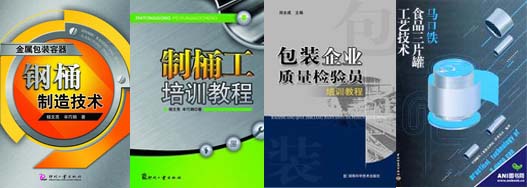
Privacy statement: Your privacy is very important to Us. Our company promises not to disclose your personal information to any external company with out your explicit permission.
Printing characteristics and techniques of Packaging metal materials
Metal is an important packaging material that plays a very important role in packaging. Metal printing has special and general paper and plastic printing, and has its own printing characteristics, and has special requirements on the ink materials used.
1. Metal printing coating, varnish
The rational selection of coatings and varnishes is the key to the quality of metal printing products. Reasonable use of coatings and varnishes is a prerequisite for ensuring good fastness, color, whiteness, gloss and processing suitability of metal printing products. Depending on the application, metal printing coatings can be divided into primer coatings, white coatings, glazing oils, interior coatings, side seam coatings, and the like. Side seam coatings can be divided into inner seam coatings and outer seam coatings. The inner seam coatings are required to meet food hygiene requirements after drying.
2. Metal printing ink
Metallic printing ink is a special ink printed on Tinplate and other metal sheets, mainly composed of pigments, binders, fillers and adjuvants.
In addition to the printing suitability of general offset inks, metal printing inks should also have the following characteristics:
(1) Strong impact resistance and adhesion. In the post-press processing, metal materials such as tinplate are subjected to canning, bending, seaming, etc., so the ink layer should have sufficient adhesion so that the printed tinplate can withstand the stamping of the mold. And has excellent mechanical processing properties (including flexibility, surface hardness and impact strength, etc.). At the same time, the ink layer is required to have good lipophilicity, so that it is well combined with the glazing oil to ensure a certain adhesion between the tinplate and the ink layer and the glazing oil.
(2) Firm and hard. In the process of canning, the tinplate printed after printing is inevitably collided with each other, and the cut tinplate is very sharp, which easily damages the pattern of the metal surface and causes the ink layer to fall off. Therefore, the ink layer is required. Firm and hard.
(3) Heat resistance. In the drying process, the printing is subjected to a heating and drying process at a certain temperature and time. Therefore, the heat-resistant pigment and the binder should be selected so that the ink is not easily yellowed after heating.
(4) Solvent resistance. In order to make the metal print look beautiful, the hardness is improved, and the damage caused by friction is prevented, glazing treatment is required. The varnish contains a large amount of strong solvent, and the ink layer after drying is required to not discolor, expand, or shrink.
(5) Light resistance. Metal Containers in daylight and light require that the color of the pattern does not change color.
(6) Resistance to retort. Some metal cans are boiled for sterilization or heated before drinking. Therefore, the ink layer is required to be discolored, not stained, and does not generate bubbles and lose light after being subjected to steam.
Since the surface of the metal substrate is impermeable, it is easy to cause dot gain. Metallic lithographic offset printing should use high viscosity inks compared to paper printing inks. The metal surface is a non-absorbent surface, and too much wetting water on the plate surface is likely to cause emulsification of the ink. Therefore, the water and ink balance on the plate surface should be achieved by controlling the thickness of the water film on the plate surface and the amount of ink.
In metal printing, in order to improve the adaptability of post-press processing and to have a certain gloss on the surface of the printing, glazing treatment (post-press coating) should be performed before the printing ink is not completely dried to form a uniform and smooth coating. Membrane to avoid bleeding. At the same time, the metal printing ink should have a certain hardness and toughness, and its properties cannot be changed during repeated heating. The base coating and the glazing oil should have good adhesion.

December 09, 2022
December 01, 2022
April 30, 2024
November 18, 2023
November 18, 2023
Model NO.: Metal Slitting Machine/Metal Precision Slitting Li Coil Weight: 25-35t Overseas Service: Lifetime Max Speed: 10-250m/Min Package: Naked Package and Fixed in The Container Trademark: Wuxi...
Model NO.: Metal Coil Metal Cut To Length Line/Metal Cut To L Thickness Range: 0.1-4mm Raw Material: Cr Steel, Al, PPGI, Hr, Silicon Steel Cutting Length Precision: Plus Minus 0.3-0.5 Package: Naked...
Model NO.: MPLF16-04 Material: Brass Connection: Push-in Model Number: Poc Straight Metle Fitting OEM: Yes Trademark: A&M Transport Package: Plastic Bag+Box+Carton Specification: normal Origin:...
Model NO.: F28 Wire diameter: 6.2 Company Type: China Professional Manufacturer Material: Mild Steel Product Warranty: 1 Year Interior Dimension: 1134*978*1050mm(L*W*H) Exterior Dimension:...
Email to this supplier
December 09, 2022
December 01, 2022
April 30, 2024
November 18, 2023
November 18, 2023

Privacy statement: Your privacy is very important to Us. Our company promises not to disclose your personal information to any external company with out your explicit permission.

Fill in more information so that we can get in touch with you faster
Privacy statement: Your privacy is very important to Us. Our company promises not to disclose your personal information to any external company with out your explicit permission.